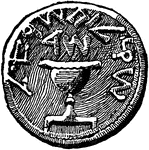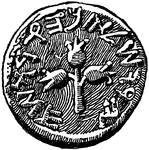Clipart tagged: ‘Mesopotamia’
An Assyrian Statue
"The king, a rude heroic figure, stands upright before the god. He holds a club in the left hand, in…

Feloher from Nineveh
"One of an order of beings, the life-principles or geniuses or tutelary spirits of living beings, believed…

Excavations at Nippur
"Nippur was the ancient 'Calneh in the land of Shinar.' Excavations here were conducted by the University…




